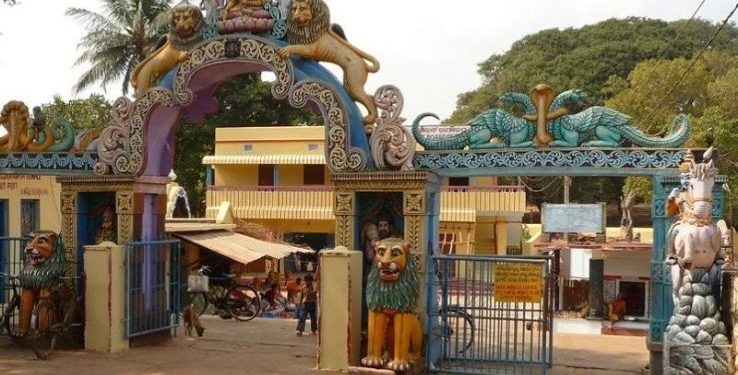Lokanath temple lying to the west of the holy town of Puri is another destination of devotees next to Sri Jagannath temple. Though the presiding deity here is Lord Shiva, the temple has intrinsic connections with Jagannath temple. The Lokanath temple, about 2 km from the Jagannath temple, assumes importance for devotees in Puri on certain festivals.
Aditya Mishra, a resident of Bhubaneswar, and a regular visitor of the Holy Town, said, “Traditional belief has been that a devotee’s Puri trip is incomplete without visiting the Lokanath temple. He is regarded as Pratyakhya Debata as per Odia saying and millions of people repose deep faith in Lokananath to sort out their problems.” Lokanath (Shiva Linga) is always under water. The upper part of the Sivalinga emits a stream. This symbolizes the holy river Ganga.
Significantly, Lokanath is regarded as ‘Bije Pratima'(representative image) of Sri Jagannath. He is known as Bhandar Lokanath in Puri temple. He is the Guardian deity to look after the treasure of the deities.
Lokanath is associated with Jagannath in several rituals, but has His own importance on Sivaratri, Chandana Yatra, and Sital Sasthi.
This is one of the most important Shaiva shrines in Odisha which is believed to have been built by Lord Ramachandra. The legend has it that Lord Rama on his way to his expedition to Lanka reached Puri and sat with a vow to see Shiva here.
According to folklore, at that time, there was a village (known as Sabarapalli in local language) nearby. Sabaras (native of that village) presented him a Lau or Lauka (pumpkin) looking like a Shiva Linga, Lord Rama installed that as the replica of Siva Linga at that place and prayed Shiva to fulfill his desire.
Since then, the Shiva Linga has been known as ‘Laukanatha’. Later, Lokanatha derived its name from Laukanath.
In the night of Pankoddhar Ekadashi (three days before Shivaratri) all the water is drained out to allow Shiva Linga to become visible to thousands of devotees.
According to local tradition, people who suffer from incurable diseases come here for worship. Flowers, sandal paste, milk, yoghurt, honey, beetle leaves, coconut water, bela leaves, offered to the God throughout the year remain decomposed in the water creating a special medicated mixture. People partake of it as Prasad to heal their diseases.
The outer walls of the main temple have images of different deities. The image of Shiva-Parvati is carved on the northern wall while the image of Lord Kartik is on the eastern wall. The image of four-handed Lord Ganesha is on the southern wall.
All side wall images are housed inside small temples on the premises of the main temple. There is a small temple to the left of the inner courtyard which preserves the images of Surya-Narayana and Chandra-Narayana. The Satya-Narayan temple within the premises preserves images of Vishnu, Laksmi and several brass idols. On the right side of the entrance to the inner courtyard you will find a figure of Lord Hanuman. The compound of the Lokanatha temple is about 10 feet below the road level.
Shivaratri is observed here with great devotion. A meeting of Hari and Hara (Shiva and Vishnu) takes place on the day. The Saranti Samobar Mela is another important festival here.
Agentic AI
AI “agents” are coming, whether we are ready or not. While there is much uncertainty about when AI models will...
Read more






































